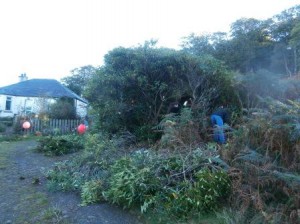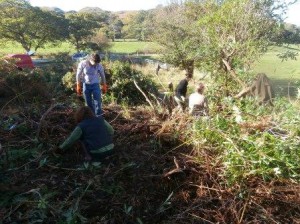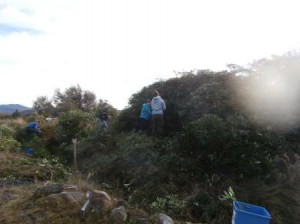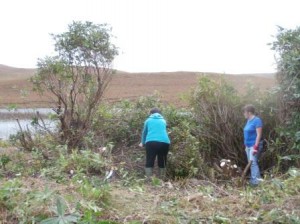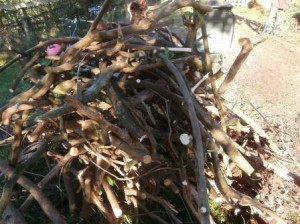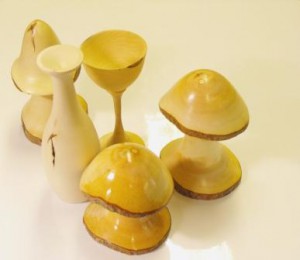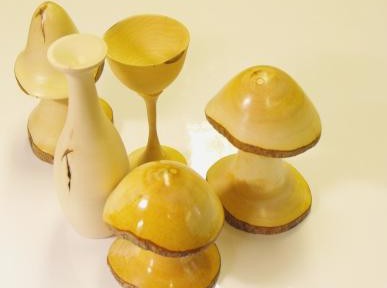
The good thing about rhododendron removal is that you’re never short of work! I’m just back from a couple of weeks away and am straight back into rhododendron bashing! Luckily though, I’ve got a fantastic team of volunteers to help me.
We’re using a range of methods- there’s no one perfect method and some suite sites better than others.
My first choice, used in the photo below, is to remove as much of the plant as possible from the ground, using the stems long branches to leaver the stump out the ground. It’s not always as simple as it sounds though- rhododendron is able to root where stems touch the ground (layering), so what may look like several bushes could be just one with a maze of criss-crossing stems.
Where rhododendron has been cut in the past, effecitvely coppiced, stems can be very small, while the stump is huge. This means that it’s very hard to get enough material out of the ground. In this case I prefer to use herbicide. This is injected directly into stems or stumps, so there is very little chace of other plants being affected by the chemical. All those pesky layers still need to untangled though- every stem needs to be injected for the chemical to do its job.
This is the method we used in the pictures below. The owners planted a single small shrub around 30 years ago, to add colour to their garden, but it has spread out of control and the surroundings are covered in tiny little rhododendron seedlings. By cutting back the invasive rhododendron and injecting the stumps, the owners have a view of the loch once again, and the spread of seeds into the surrounding environment will be stopped.
Rhododendron wood is a close-grained, hard wood and is fantastically usefull. We’ve been suggesting our volunteers use it on their fire as it is (it requires little seasoning), while colleagues at National Trust of Scotland turn it into charcoal. I’ve also been handing some onto the Highland Woodturners Club, who have been making some fantastic objects for the project. These will be sold locally to raise money the Wester Ross Environment Network can use to carry out further invasive species work.

